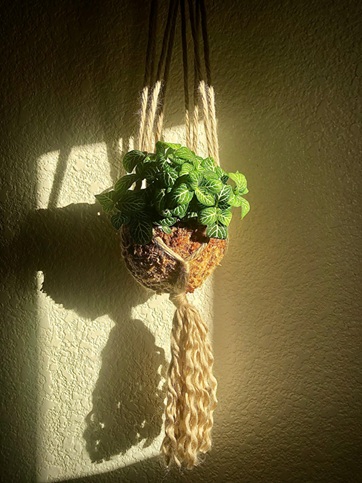Terrariums,Kokedama & Bonsai
In today’s bustling urban environments, hobbies have evolved into potential career opportunities, especially in the realm of indoor gardening. Terrariums, kokedama, and bonsai have transitioned from being simple pastimes to lucrative ventures for many enthusiasts. The intersection of creativity, passion, and market demand has given rise to a unique industry that merges art with business.
Terrariums: A Gateway to Creativity
Historical Roots

Terrariums trace their origins back to the 19th century when Dr. Nathaniel Bagshaw Ward, a London-based botanist, discovered that plants could thrive in enclosed glass containers. Originally called “Wardian cases,” these were used to transport plants across long distances. Over time, terrariums evolved into decorative indoor gardening solutions, gaining popularity as mini-ecosystems that mimic natural habitats.
Hobby
As a hobby, terrariums provide a creative outlet for individuals seeking to craft miniature ecosystems. The simplicity of assembling layers of gravel, soil, and plants inside a glass container makes it accessible to beginners. Hobbyists often find joy in designing their terrariums, experimenting with plant combinations, and using them to beautify their living spaces. The process is meditative, offering a sense of accomplishment and relaxation.
Career
The popularity of terrariums has turned this hobby into a thriving business. Entrepreneurs and artisans now create custom terrariums for homes, offices, and events. Workshops and DIY kits have also emerged, allowing professionals to monetize their skills while educating others. The rising demand for sustainable and aesthetic decor has further fueled the market for terrarium businesses, making it a profitable career path for creative individuals. Professionals who excel in creating bespoke terrariums often collaborate with interior designers or event planners to cater to niche markets.
Kokedama: The Floating Green Art

Historical Roots
Kokedama, which translates to “moss ball” in Japanese, is deeply rooted in the traditions of bonsai and Nearai, an ancient practice of wrapping a plant’s root ball in moss. Emerging during the Edo period in Japan (1603-1868), kokedama became a minimalist expression of the bonsai tradition. This art form embodies the Japanese philosophy of wabi-sabi, which appreciates imperfection and transience.
Kokedama As Hobby
Kokedama gardening is a delightful hobby that blends simplicity and artistry. The process of shaping soil, wrapping it in moss, and tying it with twine engages the senses and encourages mindfulness. Hobbyists enjoy the versatility of kokedama, as they can be displayed on surfaces or suspended to create “floating gardens.” For many, kokedama serves as a therapeutic escape from the stresses of daily life.
Kokedama As Career
For those with a knack for kokedama, turning this hobby into a career is a natural progression. Professional kokedama artists cater to a niche market, offering bespoke creations for interior design, corporate spaces, and special events. Hosting workshops and selling pre-made kokedama arrangements online or at artisan markets are popular revenue streams. The eco-friendly nature of kokedama also appeals to environmentally conscious consumers, boosting its commercial appeal. Additionally, professionals often collaborate with sustainable brands and urban planners to promote green living.
Bonsai: The Living Sculpture

Historical Roots
The art of bonsai originated in China over a thousand years ago and was later refined in Japan. Initially a symbol of wealth and prestige, bonsai evolved into an accessible art form that reflects harmony between nature and humanity. Each bonsai tree is meticulously shaped to replicate the grandeur of its full-sized counterpart, embodying patience, discipline, and artistry.
Bonsai As Hobby
As a hobby, bonsai is a deeply rewarding practice that combines patience, skill, and artistic vision. Cultivating a miniature tree that mimics the grandeur of its full-sized counterpart requires dedication and time. For hobbyists, bonsai represents a journey of growth and self-discipline, offering a profound connection to nature and a sense of tranquility. The act of pruning, wiring, and nurturing bonsai trees fosters mindfulness and can become a lifelong passion.
Bonsai As Career

Bonsai cultivation has a well-established presence in the professional world. From selling bonsai trees to offering training sessions and consultations, bonsai artists have multiple avenues to generate income. Exhibiting their work at botanical shows or art galleries allows professionals to gain recognition and attract high-paying clients. Additionally, bonsai businesses often provide maintenance services, catering to enthusiasts who lack the time or expertise to care for their trees. Advanced bonsai artists frequently command high prices for their creations, with some trees valued at thousands of dollars.
The Transition: Hobby to Career
Challenges and Considerations
Transitioning from a hobbyist to a professional in the world of terrariums, kokedama, or bonsai comes with its challenges. Mastering the technical skills, understanding market trends, and building a client base require time and effort. Professionals often face the pressure of balancing creativity with the practicalities of running a business, such as marketing, pricing, and customer service. Additionally, competition in these niche markets can be intense, requiring unique branding and innovative designs to stand out.
Rewards and Opportunities
Despite the challenges, pursuing a career in these art forms offers immense rewards. The ability to turn a passion into a livelihood brings personal fulfillment and financial independence. Moreover, the growing interest in sustainable and nature-inspired lifestyles ensures a steady demand for these creative products and services. Professionals who successfully transition often find themselves part of a supportive community of like-minded individuals, sharing knowledge and inspiring others.
Why Urban Dwellers Are Drawn to These Practices
1. As Hobby
Urban life often leaves little room for relaxation and creativity. Terrariums, kokedama, and bonsai offer accessible ways to engage with nature, even in confined spaces. These hobbies provide an escape from the fast-paced city lifestyle, fostering mindfulness and creativity. For many, the act of nurturing plants serves as a reminder of the beauty and resilience of nature, offering a sense of grounding in an otherwise chaotic environment.
2.As a Career
For those seeking alternative career paths, these practices present unique opportunities. The rise of e-commerce and social media has made it easier than ever to reach a global audience. Sharing their creations online allows professionals to build a brand and connect with like-minded individuals, turning a niche passion into a viable career. Additionally, the demand for personalized and sustainable decor ensures a steady stream of clients, ranging from homeowners to corporate clients.
Getting Started: Hobbyists and Aspiring Professionals
For Terrariums:
Hobby: Start with small DIY projects using glass jars and low-maintenance plants.
Career: Develop unique designs and consider hosting workshops or selling kits. Partnering with local nurseries or interior designers can also expand your reach.

For Kokedama:
Hobby: Experiment with making moss balls for personal use or gifts.
Career: Build an online presence and offer custom designs or instructional classes. Collaborating with eco-friendly brands can enhance visibility.

For Bonsai:
Hobby: Begin with beginner-friendly species like juniper or ficus. Join local bonsai clubs or online forums to learn and grow.
Career: Invest in advanced training and participate in exhibitions or competitions to gain visibility. Networking with other professionals can open doors to collaborations and opportunities.

Conclusion
Whether pursued as a hobby or a career, terrariums, kokedama, and bonsai offer a fulfilling connection to nature and creativity. For hobbyists, they provide a peaceful retreat from daily stress. For professionals, they represent a chance to blend passion with entrepreneurship. As urban dwellers continue to seek meaningful ways to incorporate greenery into their lives, these art forms will remain timeless and versatile. The journey from hobby to career may be challenging, but for those who embrace it, the rewards are both personal and professional.
Disclaimer
This blog is for informational purposes only and does not constitute professional advice. While every effort has been made to ensure accuracy, readers are encouraged to conduct their own research and seek expert guidance when transitioning from hobbyist to professional in the fields of terrariums, kokedama, or bonsai. Success in these careers depends on individual skills, market conditions, and business strategies. The author and publisher disclaim any liability for outcomes resulting from the use of this information.


Recent Comments